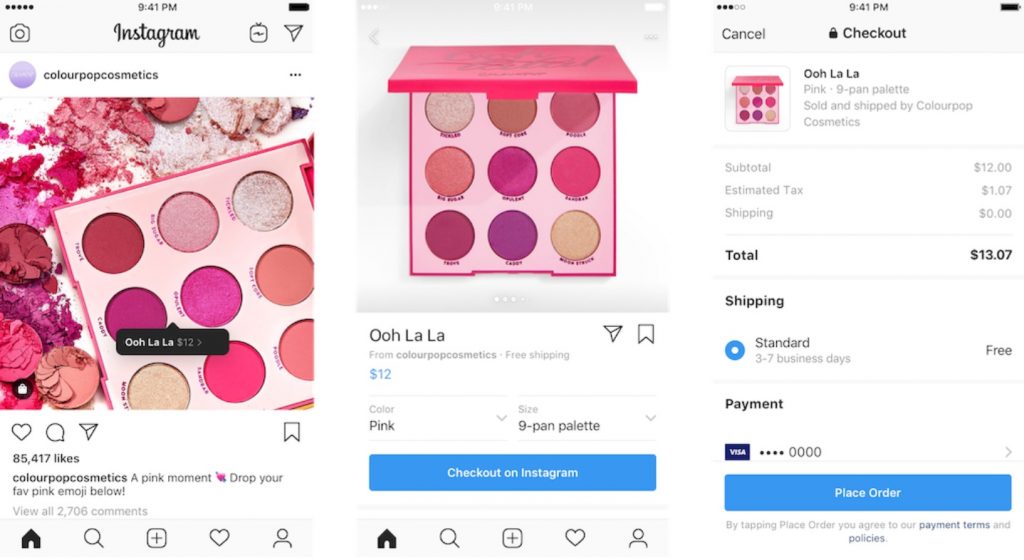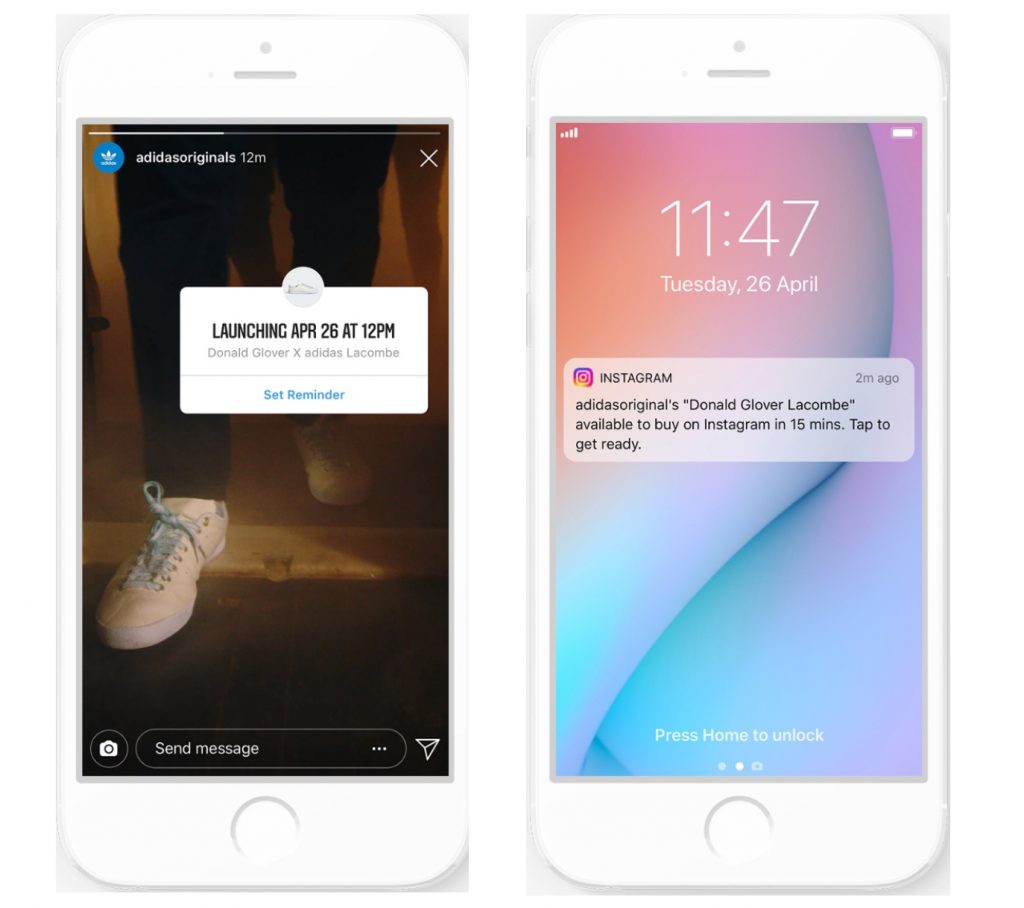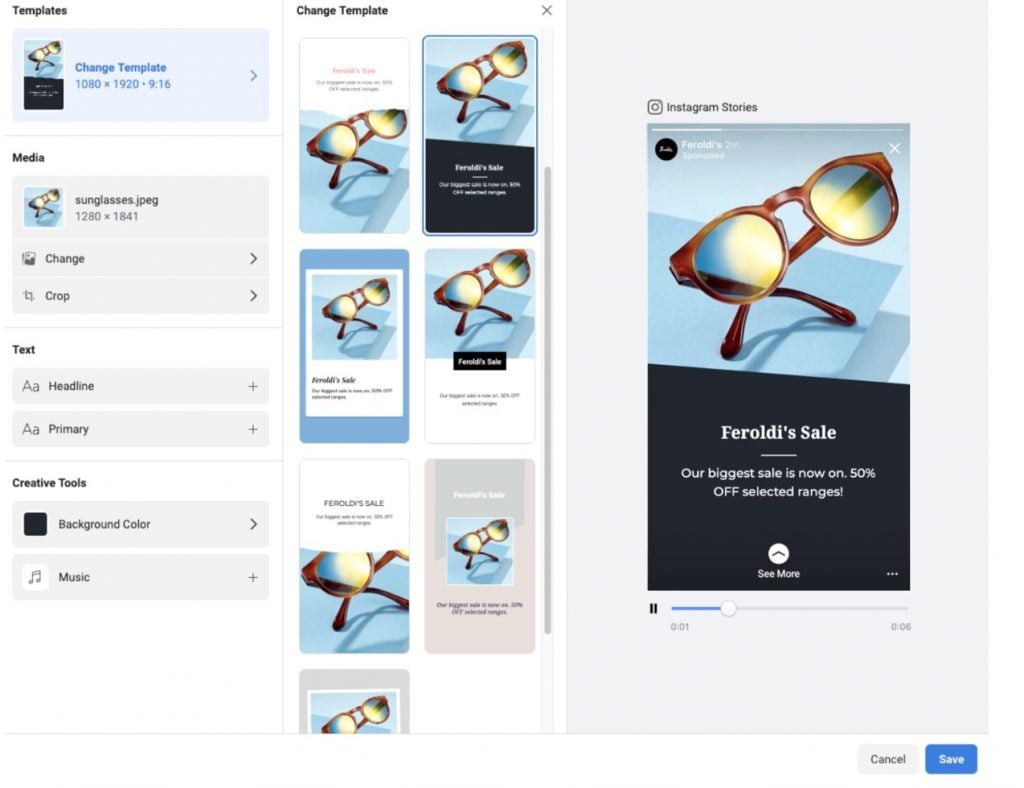Updated 1/14/20 to include current information and new features.
If you’re already running social advertising, you know that Facebook Ads Manager makes it easy to repurpose creative intended for Facebook directly to Instagram by simply selecting a story or feed placement. But as Instagram becomes more of a discovery tool for shoppers, there is a massive opportunity for e-commerce brands to drive sales beyond promoted posts or stories.
In an effort to further establish itself as a destination for inspiration-based purchases, Instagram has not only made available paid ad placements more engaging, they’ve found more ways to let brands of all sizes showcase their products organically with conversions in mind.
Features like Instagram story links have been around since 2017, but availability is limited to business accounts with 10,000 followers or more. Enter: Shopping in Stories.
In September 2018, Instagram formally rolled out Shopping in Stories, which started as a limited beta in June of that year. As a result, brands large and small can tag products available in their Facebook catalog in organic stories in-app using shopping stickers. In turn, users can tap the sticker during the story experience and see the price and item description, or head directly to the product page. If you’re interested in learning more about Facebook catalogs, check out this post on Catalog Management Best Practices for Social Media.

Shopping in Explore, which also launched in summer 2018, utilizes “topic channels” and personalizes categories of interest unique to each user on their explore page. Shopping in Explore leverages the Instagram algorithm to show users shoppable posts by brands they follow, alongside non-shopping content served based on your other browsing habits.

Fast forward to March of 2019, when Instagram rolled out Checkout, an in-app shopping feature that allows users to purchase items without ever leaving the ‘gram. By tapping on a product tag in a shopping post, shoppers are directed to a product page with a “Checkout on Instagram” CTA. You can select options like size or color, proceed to payment, and then seamlessly return to scrolling.

This provides another revenue path for brands that are looking to drive conversions online. It’s important to note, though, that this level of consumer accessibility comes at a price. TechCrunch confirmed via Instagram that there is a “selling fee” at the merchant’s expense “to help fund programs and products that help make checkout possible, as well as offset transaction-related expenses.”
Long before Checkout launched, business owners have been selling their products from the app. Even without advertising dollars, creators have used well-curated feeds and influencer marketing to develop their brands and sell merchandise to their followers. This is especially true in the world of streetwear, where scarcity has become a commodity for brands and consumers alike.
As Instagram notes, “Once unconventional strategies, including creator collaborations and limited releases, are now being adopted by fashion, beauty and luxury brands.”
As a result, the Reminders for Product Launches feature went into beta in September 2019. Thanks to product launch stickers in Stories and a product launch tag option in-feed, users can set reminders for a new drop, preview details, and make a purchase once it becomes available.

In preparation for the holiday advertising season, Facebook gifted advertisers with templates to create vertical, full-sized assets for the Stories placement across Instagram, Facebook, and Messenger.
With 500 million users posting to their stories daily, Instagram Stories have become a significant outlet for brands to engage with users and drive conversions. With the rollout of the templates, Facebook has given advertisers the chance to strengthen their creative and remain competitive in a space dominated by large retailers.

With a steady stream of product updates under their belt, it’s clear e-commerce will remain a top focus for Instagram. In fact, many of the major updates in 2018 came on the heels of news that Instagram may be launching a standalone shopping app. Now that 2020 is here, it’s hard to say if and when that app could become a reality. In the meantime, however, Instagram is working to keep itself a destination for shoppers and advertisers alike.









